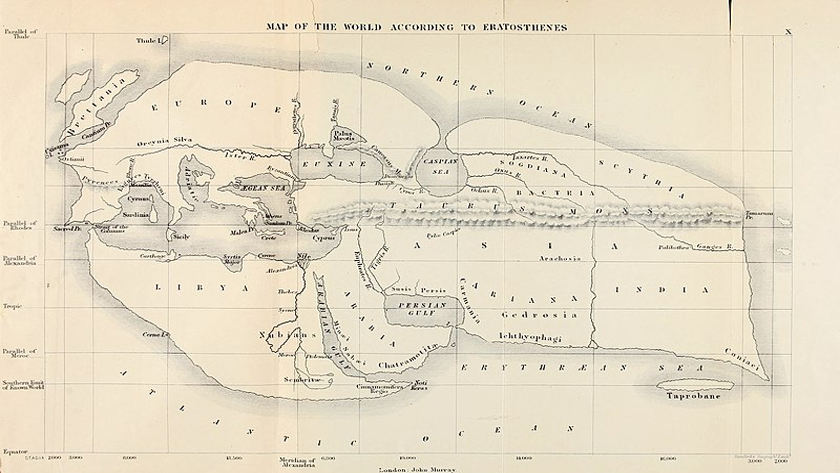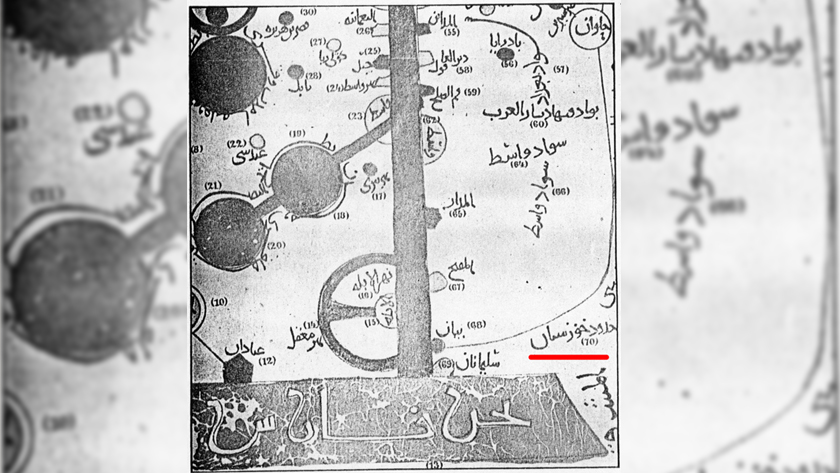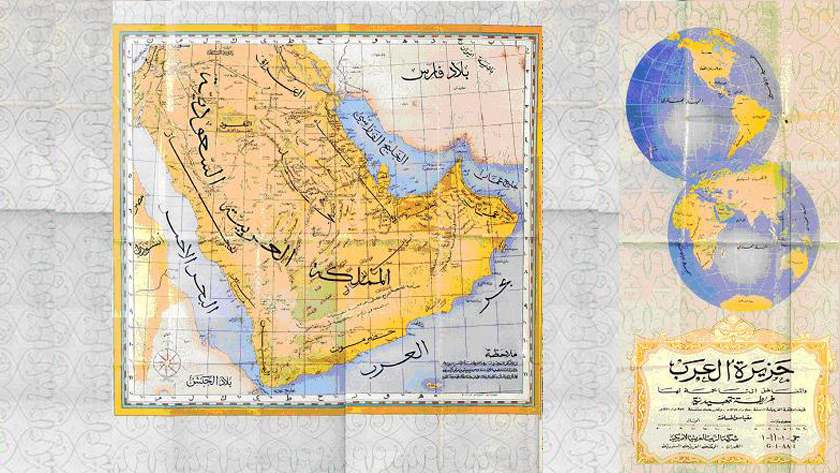Iran Press/ Iran News: The 25th edition of the biennial football tournament, which runs from Jan. 6 to 19, has brought teams from Iraq, the UAE, Saudi Arabia, Kuwait, Bahrain, Oman, Qatar, and Yemen together.
FIFA President Gianni Infantino attended the ceremony at the Basra International Stadium.
“It was great to have attended the opening ceremony and the opening game of the 2023 Arabian Gulf Cup in Basra, Iraq between Iraq and Oman,” said the FIFA President.
The arrangement of the Persian Gulf Arab Cup under a fake name in the Iraqi city of Basra brought about numerous criticisms, so the Iranian football federation issued a protesting statement on Saturday, which will be handed over to the International Federation of Association Football (FIFA).
The statement emphasizes that following the use of a fake name for the historical title of the Persian Gulf at the cup, promoted the Iranian federation to convey official complaints of the Iranian nation and the football community in Iran to FIFA.
Obviously, the Persian Gulf is a noble and historical name, which has been applied in all languages and various atlases, including ancient and historical maps, the statement noted.
Related News:
Persian Gulf; blue zone of ancient civilization
Iran will never compromise on nat'l integrity; sovereignty over Persian Gulf islands
The unchallengeable documents regarding the issue will be handed over to FIFA to pursue the overhaul of the inappropriate methods of using names, which are in contradiction to international customs.
Persian Gulf in history
According to the Ministry of Foreign Affairs documents provided earlier to International organizations across the World to use the real name for the Persian Gulf,there are no any written document about Arabian coast prior to prophet Mohammad(PBUH) era( from his birth about 570 CE in Mecca). However, in more than 300 geographical, historical, literary, books or interpretation(Tafsir) of Quran and Islamic morals, and jurisprudence, the Muslims and Arab scholars have described PERSIAN GULF from beginning day of Islamic period to the last century .from Tabari (1100 ac)to Tantavee(1900) all Islamic scholar and religious leader in the different era ABAASID- FATOMID – MUGUL- OTHEMAN – SAFAVID ERA all unanimously had referred to it as Persian gulf or Persian sea .
Hegemony of Portuguese in the Persian gulf
In 1507 A.D.Portugal’s navy captured Hormuz Island under commandment of Alphonso Burkerk and it continued till 1620. In a research essay, Dr. José Manuel Garcia, professor and a member of Geographical Society of Portugal emphasized the name of Persian Gulf in the official and unofficial deeds and maps of Portugal since 1507 so far. The maps prepared by the Portuguese on Persian Gulf are kept in museums as mankind heritage.
Related News:
April 30; National Persian Gulf Day
Persian Gulf name from among 50 maps and letters exchanged during the years
During 1500 to 1700 A.D. among the governors of Persian Gulf and the kings of Portugal and Spain or those mentioned in books and writings of tourists, the Persian Gulf has been named as follows:
Mare de Persia, Persico Sinus, mare Persio, Mare Persicum, Mar Persiano, Persiski Zaliv, Persischer Golf,ParsSea, Bahre Fars, Perza obol, Persiste Habbugt.
Persian Gulf in Arabs Contracts and Accords
As of 1800 to 1970, at least in 45 contracts concluded among the tribal leader(Emirates) or countries such as Kuwait, Saudi Arabia, Ottoman, Oman, Emirs of Motesalehe (United Emirates), compiled in English and Arabic, the name of Persian Gulf (In Arabian Language called Bahre Fars) has been used.
In a book published in UAE 1989 by Rashed Ali Mohammad titled : ((Economic and political agreement between the Arabs Emirs and Britain 1806-1971)) he had included original of around 22 contracts in all of them in both Arabic and English text the name of Persian gulf had been mentioned.
From among the aforesaid contracts the following can be mentioned:
1- General contract with Arabian Emirs on Jan. 8, 1820, between Sheikhs of United Emirates at Persian Gulf, signed by General Cair and 11 chiefs of Arab Tribes, the word: Al Khaleej Al Farsi has been used in the Arabic texts.-
2- Treaty of 1856 and ۱۹۴۷ on Prohibition of Slaves trades.-
3- Permanent Contract of Peace in 1853.-
4-Contract on Independence of Kuwait (this deed was registered on June 19, 1961, with Secretariat of United Nations
5-Treaty on Determination of Border Lines ofIraqandKuwait(1996)
6- Even Nasser the pan-Arabic leader of Egypt had used the term of (al khaleej al Farsi) Persian gulf in all his speeches and his books and articles before the war of 1967.
Persian Gulf in all Historical Maps of the region
In all the important historical maps and Atlas whether modern or belonging to previous centuries, the water artery located at the south of Iran has been registered as the Persian Gulf. In the Arabian countries too, it has always been named the Persian Gulf up to the 70s. For instance, in the Atlas “Al araq fi Al khavaret Al ghadimeh” by Dr. Ahmad Souseh (Baghdad 1959) including 40 maps among the Arabian sources of the Middle Ages, all have the Arabic term for the Persian Gulf.

A historical map of the Persian Gulf in Saeed Al Maktoum House, Dubai, United Arab Emirates. The word "Persian" is erased from the phrase "Persian Gulf".
In the maps presented by Arabian countries to the International Court of justice for settlements of border claims, the name of PERSIAN GULF has been mentioned in their documents.
Atlas of La Péninsule Arabique dans les cartes Européennes Anciennes (The Arabian Peninsula in Old European Maps).Paris, Monde Arabs institute and Tunisia university IMA & Khaled. Al Ankary, 2001. ۴۲۴ pp. contains ۲۶۰ maps with details about each map in 3 languages: Arabic, English, and French. Almost all of these 260 maps have the correct name of Persian Gulf.
Moreover, 10 maps have used both the Persian Gulf for the gulf and also Persian Sea (for the current area of Sea of Oman and the Arabian sea).
 19th Century reconstruction of 194 BC Eratosthenes' map, Denoting Persian Gulf
19th Century reconstruction of 194 BC Eratosthenes' map, Denoting Persian Gulf
The book: Roots of Kuwait. “Osoul Alkuwait Almanshour Alalam” (1991) published in the Netherlands also contains 15 maps where the name of PERSIAN GULFexists.
In the “Atlas of Alkuwaitfi Al kharaet Al Aalam” some maps have been used where there exists the name of PERSIAN GULF.
In Atlas of “Alkuwaitfi Al kharaet Al tarikhieh” published by the efforts of Abdollah Yousef Al ghanim in 1994, there are about 200 maps mentioning the name of Persian Gulf.
In the ARABIC book: “Al khalij al fars Abar Al tarikh va Al ghoroun” (written by Mohammad Mirza, 1976Cairo) there are 52 maps drawn out of Arabic sources, all have the name of Persian Gulf.
In Atlas of “History of Islam” (1951-55 America and Egypt) the name Persian Gulf has been mentioned.
In the Atlas of “Khalij (Gulf) in the Historical Maps” published in UAE (1999) more than 600 maps have the term Persian Gulf.
 Regional map showing the word Bahr Fars, ("Persian Sea") in Arabic, from the 9th century text Al-aqalim by the Persian geographer Istakhri
Regional map showing the word Bahr Fars, ("Persian Sea") in Arabic, from the 9th century text Al-aqalim by the Persian geographer Istakhri
The Arabic Bank and Beyt Al Quran in Bahrain published a large wall calendar in 1996 containing the 11 historical map of Bahrain which all the maps contain the name of Persian Gulf.
It is interesting that from among 6000 existing historical maps published up to 1890, there are only three maps mentioning the names of Basre Gulf, Ghatif Gulf, and Arabic Gulf, this name in fact are the name of bays of the Persian gulf. in local language they call the bay also the gulf like gulf of Busher-ChahBahar Gulf, SirafGulf,BasrehGulf,Ghatif Gulf,Bahrain Gulf, Basre gulf …. but such names are not applied to the entirety of the Persian Gulf.
It is obvious that the promotional use by the Arabs of the three aforementioned maps, whose identity and originality are not clear, in comparison with 6000 maps and more than 300 historical and credible geographical books from ancient times to 20th century , shall lack any value.
In Arabic Dictionaries like Al Monjed, and also in all (60) Quranic Tafsires and religious Islamic books and in all treaties ( more than 30 Arabic treaties between the Arabs tribe leader with theUKand Othman and Iranians )Persian gulfhas been used .
In the many museums all over the world some can find maps or manuscript having the name Persian gulf some recorded as intangible world heritage (UNESCO) In Library of American Congress, Britain National Library (London), deeds at Ministry of India’s Affairs (London), Library of Faculty of Orientals Studies of London, there are more than 300 maps, containing the name Persian Gulf. In Eskandria Library of Egypt And National Musum Of Egypt alsoPersian gulfmap are preserved.
 A Saudi ARAMCO map from 1952 using the term "Persian Gulf" (الخليج الفارسي)
A Saudi ARAMCO map from 1952 using the term "Persian Gulf" (الخليج الفارسي)
Furthermore, about 30 valid Atlas have registered the name of PERSIAN GULF within the past 300 years, such as Atlas of Thomas Herbert (1628).
Atlas of Pars,LousajUniversity(1863). – Atlas ofGermany(1861), Pars Envile Atlas (1760).- Atlas of Modern Geography (1890).- Atlas of London (1873),- Atlas of Ernest Embrosius (1922),- Atlas of Bilefild (1899)- Atlas of Harmsorth (19th Century, London).
In 18th to 20th centuries when the UK expanded its dominance over the seas and appeared as protectorate of the Sheikhs on the south sectors of the PERSIAN GULF, the official maps and documents of the areas in all languages refers to the GULF asPERSIAN GULF.
Applications of the name Persian Gulf by International Organizations
Not only the Persian Gulf had been used since ancient times in all languages but also in current time non-Arabs countries had never recognized a new tribal name and the UN and all international Organizations and affiliated foundations have applied the correct name of PERSIAN GULF.
In the Arabic text of the UN some time had appeared the wrong term but as soon as the secretariat considered it the correction have been done.
For the first time in 1971 in a UN text the wrong term was used and then was corrected by a UN instruction and Note No. AD311/1GEN dated March 5, 1971.
 UN calls for use of legal and valid term Persian Gulf
UN calls for use of legal and valid term Persian Gulf
From among the other instructions of United Nations, the following samples can be named:
Note No. LA45.82 dated Aug. 10, 1984 (New York)
Circular No. CAB/1/87/63 dated 16.02.1987 of Managing Director of UNESCO.
ST/CSSER/29 dated Jan. 10, 1990.
AD/311/1/GEN dated March 5, 1991.
ST/CS/SER.A/29/Add.1 dated Jan. 24, 1992.
ST/CS/SER.A/29/Add.2 dated Aug. 18, 1994.
ST/CS/SER.A/29/Rev.1 dated May 14, 1999.
In all the above-mentioned notes and circulars, it has been instructed that the water body existing at the south side ofIranbe stated: PERSIAN GULF. The Specialized Group for Experts on Standardization of Geographical Names,(UNGEGN) active in the United Nations Social Economical Council also emphasizes the correct use of historical names for features, and is active in dispute settlement related to geographical names. “Naphtali Cadman” the head of Working Group for Toponymy Information has stated in a book published by UNGEGN on 2001 that the motivation to change the name ofPERSIAN .
Some of the most important historical atlases of the Persian Gulf are as:
-Atlas of The Arabian Peninsula in Old European Maps (253 maps) by Khaled Al Ankary, Institute du Monde Arabe,Parisand Tunisia University,2001.
All 253 maps of this atlas have been printed in color and 3 languages and have the corect name of Persian gulf also the maps in pages:-141-226-323-322-331-345-347-363-355 have mentioned persian gulf for the Gulf and also persian sea for the body of water of the current Arabian sea and Oman gulf, such as the hours shape map of Bunting H.S.Q34/24CM Hanover,1620.
-Atlas of Historical maps of the gulf by sultan Muhammad al Qasimi Sharjah 500 maps of the Persian gulf.
-Atlas of Iraq in old maps. by Ahmad Sussa 39 old maps of Arabic and Islamic sources all have the correct name of Persian gulf(Bahre Fars)
-Kuwait in the maps of the world 1992 . contain 80 maps all have the Persian gulf name.
-Kuwait reading the historical maps, 200 maps ,1994 .
-Roots of Kuwait, 15 maps,1991.
Description of the Persian gulf in the historical maps by the Iranology foundation, 40 maps of Islamic scholars and 120 maps of European famous cartographers 0f 1500-1900 AD.by Dr. Hassan Habibi 2007.
Tehran. All the maps have the name Persian Gulf. and many other atlases have also been published and they have been described in the book: Documents on the Persian Gulf’s name.
International Organizations
International organization and Intergovernmental organization uses the Persian gulf as an internationally recognized term.
written description by Muslim travelers and European geographers. Among historians, travelers, and geographers of the Islamic era, many of them writing in Arabic or Persian from the 9th to the 17th century, Ibn Khordadbeh, Ibn al-Faqih, Ibn Rustah, Sohrab, Ramhormozi, Abu Ishaq Ibrahim ibn Muhammad al-Farisi al Istakhri, Abu al-Hasan Ali ibn al-Husayn ibn Ali al-Mas’udi, Al-Mutahhar ibn Tahir al-Maqdisi (d. 966), Ibn Hawqal, Al-Muqaddasi, Ibn Khaldun, Mohammad ibn Najub Bekiran, Abu Rayhan Biruni, Muhammad al-Idrisi, Yaqut al-Hamawi, Zakariya al-Qazwini, Abu’l-Fida, Al-Dimashqi, Hamdollah Mostowfi, Al-Nuwayri, Ibn Batutta, Katip Çelebi, and other sources have described the Persian gulf and used the terms, “Bahr-i Fars”, “Bahr-i Ajam“, “Bahr-i-Farsi”, “Dera-i-Fars”(all refers to Persia) and are equable to Persian gulf or Persian sea.
Iranian has always respected geographical names such as the Arabian sea although for the Arabian sea and the gulf of Oman historically other names had been used such as Mokran sea- Persian sea- Akhzar sea … some arab scholars had written to justify the change of the term Persian gulf they claimed that Arabian gulf also had been used in ancient time they had mentioned Pliny book . but infact Pliny had never mentioned Persian gulf as the Arabian gulf :below is the text:
Pliny: Natural History ۶٫۹۶-۱۱۱٫ (On India)
Source: https://sourcebooks.fordham.edu/ancient/pliny-india.asp
Moreover in this region the sea then makes a double inroad, into the land; the name given to it by our countrymen is the Red Sea, while the Greeks call it Erythrum, from King Brythras, or, according to others, in the belief that the water is given a red color by the reflection of the sun, while others say that the name comes from the sand and the soil, and others that it is due to the actual water being naturally of such a character.
However, this sea is divided into two bays. The one to the east is called the Persian Gulf, and according to the report of Eratosthenes measures 2500 miles round.
Opposite is Arabia, with a coastline 1500 miles in length, and on its other side Arabia is encompassed by the second bay, named the Arabian Gulf; the ocean flowing into this is called the Azanian Sea. The width of the Persian Gulf at its entrance some make five and others four miles ; the distance in a straight line from the entrance to the innermost part of the Gulf has been ascertained to be nearly 1125 miles, and its outline has been found to be in the likeness of a human head.
Onesicritus and Nearchus write that from the river Indus to the Persian Gulf and from there to Babylon by the marshes’of the Euphrates is a voyage of 1700 miles.
Translated and abstracted from the book:
Documents on the Persian Gulf‘s name:: the eternal heritage of ancient time By: Mohammad Ajam.
Also: http://persiangulfstudies.com/fa/index.asp?p=pages&ID=781&Sub=779
United Nations Group of Experts on Geographical Names Working Paper No. 61, 23rd Session, Vienna, 28 March – ۴ April 2006. accessed October 9, 2010.
You can also access the direct documents provided by the Ministry of Foreign Affairs to get to know about the legal validity of the term, Persian Gulf.
https://japan.mfa.gov.ir/portal/newsview/46003/documents-on-the-persian-gulf%E2%80%99s-name-the-eternal-heritage-of-ancient-time#_ftn1
206
Read More:
Persian Gulf Museum, window to Iran's civilization
ahmad shirzadian

